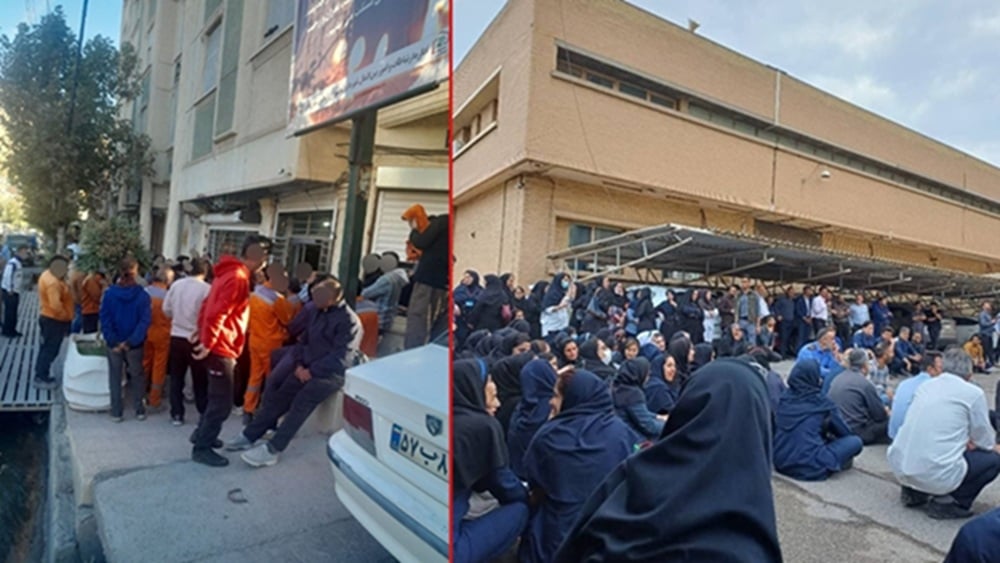
On November 5, 2025, a powerful wave of protests swept across Iran, laying bare the systemic decay of a regime that can no longer meet the most basic needs of its people. In a remarkable display of nationwide discontent, nurses, doctors, city workers, farmers, pharmacists, and dhow owners took to the streets in separate yet synchronized cries for their fundamental rights. This cascade of protests is not a collection of isolated labor disputes; it is a clear verdict on a corrupt and incompetent system that has pushed every pillar of society to its breaking point.
The Collapse of Public Services and Healthcare
The very foundations of the state’s public services are cracking under the weight of its own mismanagement, turning hospitals and city halls into centers of dissent. In Ilam, municipal workers—some unpaid for three months, with their insurance cut off—gathered to demand their overdue wages. Their simple assembly was met with threats from security forces, who ordered them to disperse, revealing the regime’s paranoia in the face of even the most basic calls for justice. One protestor’s defiant message captured the mood: “Are you scared of a simple gathering? Know this, life isn’t fixed with promises; a proper salary keeps life running!”
November 5—Mashhad, northeast Iran
Nurses at Qaem Hospital rallied against delayed pay, poor working conditions, and exhaustion caused by chronic understaffing. They demand dignity, fair wages, and job security.#IranProtests pic.twitter.com/d6bWwx5FXa— People's Mojahedin Organization of Iran (PMOI/MEK) (@Mojahedineng) November 5, 2025
The crisis in healthcare was even more acute. In Mashhad and Ahvaz, nurses protested with empty table spreads, a symbolic indictment of the regime’s hollow promises. “You entrust people’s lives to us, but you don’t give us our rights,” one nurse in Mashhad declared. In Iranshahr, doctors at Khatam-al Anbia Hospital went on strike over unpaid salaries, crippling the emergency room and forcing desperately ill patients to seek care at expensive private clinics. Meanwhile, in Fars province, pharmacists warned of an impending “real medicine crisis” after going seven months without payment from the regime’s Social Security Organization.
The Starvation of the Nation’s Producers
The regime’s failure extends beyond public services, crippling the nation’s food supply chain and strangling its producers. Poultry farmers across the country gathered in protest after a two-month delay in receiving essential feed they had already invested in for the year. Their chants echoed their desperation: “Today is a day of mourning! A poultry farmer without feed is in mourning today!”
November 5—Tehran, Iran
Poultry farmers rallied outside the Ministry of Agriculture to protest a two-month delay in receiving essential feed supplies, threatening their production and livelihoods.
Protesters: “A farmer without feed is already ruined!”#IranProtests pic.twitter.com/YfXWJ4P3Jt— People's Mojahedin Organization of Iran (PMOI/MEK) (@Mojahedineng) November 5, 2025
This crisis of production was mirrored in the agricultural heartlands. In Mazandaran and Golestan, rice farmers protested after waiting an entire year for a 200 billion toman debt to be paid by buyers. Their demand was simple and profound: “Our product is not a gift or charity; it is our right!” In the southern port of Hendijan, traditional dhow owners and traders protested crippling restrictions that have brought the region’s local economy “to the brink of destruction.” One protester spoke for many, saying, “Our patience is finished… We grew up with the sea, we made our living from the sea; today they have deprived us of our bread.”
From Unlivable Wages to Unexplained Explosions
Amidst these targeted protests, a general atmosphere of economic desperation and insecurity pervades Iranian society. With the daily minimum wage at less than 400,000 tomans, a single proper meal for a family can cost three times what a worker earns in a day. The regime’s response, offered by the Minister of Labor, is not to raise wages but to promote a failed voucher system that provides a fraction of what is needed for basic sustenance.
November 5—Iranshahr, southeast Iran
Doctors at Khatam-al-Anbia Hospital went on strike over delayed wages and forced managerial changes, leaving emergency care disrupted. #IranProtests pic.twitter.com/0ioljVYaVg— People's Mojahedin Organization of Iran (PMOI/MEK) (@Mojahedineng) November 5, 2025
This economic anxiety is compounded by a palpable sense of chaos. On the same morning that workers and farmers were demanding their pay, residents of Kermanshah were shaken by two severe, unexplained explosions. While authorities claimed the blasts were unrelated to a small fire in the area, the lack of a clear explanation only fuels public distrust and highlights a state unable to provide even basic security.
The events of November 5 are a microcosm of Iran’s reality. This is not just about unpaid salaries or delayed resources; it is a nationwide revolt against the theft of dignity, survival, and a future. The slogans heard across the country—from “Promises are not enough!” to “If you cannot manage, step aside!”—are no longer pleas but demands. The breadth of these protests, uniting disparate groups from doctors to farmers, demonstrates a cohesive national opposition born of shared suffering. The regime’s old tools of empty promises and intimidation are failing. These nationwide tremors are the precursors to the earthquake of change the Iranian people have long demanded and for which they continue to bravely fight.

